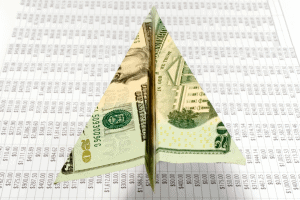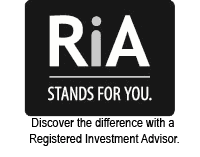With the average retirement lasting close to 20 years and the desired retirement even longer, retirees must plan for market volatility or face potentially significant consequences.
5 Methods to Limit Market Volatility Risks for Retirees
In general, we are retiring earlier and living longer. While the average retirement lasts nearly 20 years, recent surveys show that the ideal length of retirement is 29 years. These trends, coupled with expected higher levels of inflation and a less predictable post-covid world, mean that we need to be better prepared than ever to confront market volatility.
Think about the current challenges confronting a retiree (or a soon-to-be retiree): bear market declines in investment account values, 40-year high inflation, reduced purchasing power, and levels of uncertainty that haven’t been seen in decades. Globally disruptive pandemics like Covid may not be a regular occurrence, but market volatility is something every retiree will face, and we should be ready.
We have helped countless clients prepare for and live out their ideal retirement. This experience has revealed 5 very important and effective ways retirees can minimize the potential damages caused by market volatility:
1.) Build an Appropriate Level of Cash Reserves
There is one guarantee when it comes to investing in the stock market: there will be volatility. Bouts of severe volatility can wreak havoc on even a well-balanced and diversified portfolio. Volatility does not last forever though, and it is advantageous to give your investments time to recover in value. Consider the performance of the S&P 500 index over a 12-month period following these major market selloffs (Morningstar, December 2021):
| Date of S&P’s Biggest Declines | Black Monday 8/25/87 – 12/4/87 | Gulf War 7/16/90 – 10/11/90 | Asia Monetary Crisis 7/17/98 – 8/31/98 | Dot Com Bubble 3/27/00 – 10/9/02 | Great Financial Crisis 10/9/07 – 3/9/09 | Trade War 10/3/18 – 12/24/18 | Global Pandemic 2/20/20 – 3/23/20 |
| U.S Stocks | – 33.5% | -19.9% | -19.3% | -49.0% | -56.8% | -19.6% | -33.8% |
| Next 12 Months | +21.4% | +29.1% | +37.9% | +33.7% | +68.6% | +37.1% | +77.8% |
The lesson here? Building up enough cash reserves to use for paying retirement living expenses during times of market volatility can give your investment accounts time to recover in value. The current bear market that we are in is a great reminder of the importance of having cash reserves to buffer against these volatility risks.
So, what is an adequate level of cash reserves? The answer to that question really varies from person to person but a generally safe rule of thumb for retirees is to have one year’s worth of living expenses set aside in a cash or cash equivalent investment account.
2.) Establish a Healthy Income floor
Secondly, an ‘income floor’ is usually made up of relatively reliable inflows like Social Security, pension benefits, annuities, and other supplemental income sources like those from a rental property, royalties, or a trust. Ideally, you would retire with enough guaranteed income to cover your retirement living expenses. While this may not be feasible for most of us, the higher our ratio of guaranteed income to expenses, the less the need to make withdrawals from retirement investments. This is particularly beneficial during periods of market volatility when the risk of taking distributions at significantly reduced account values is higher. The larger your retirement income floor the better positioned you are to ride out bouts of volatility.
A healthy and reliable income floor is particularly important for early retirees. Why? Generally, early retirees have longer retirements and need their retirement investments to last longer. They also typically have higher living expenses related to the need to self-fund their health insurance coverage until reaching Medicare eligibility. If you are one of a growing number of people considering early retirement, be particularly sure to consider the added risks that market volatility will present.
3.) Budget: Be Prepared to Reduce Spending
Moreover, finding additional guaranteed income to lessen our retirement account withdrawal needs may not always be feasible. In fact, it may not be an option. However, most of us can reduce spending, and history shows that is exactly what we do when times get ‘tough’. But where do we cut back and by how much should we decrease what we spend? This is where a household budget can be valuable. Budgets are a great resource not only for keeping spending in check, but also, for helping us identify exactly where we can save if needed.
Want to get ahead of the curve?
If you’re not already, start a budget before you retire. If your retirement lifestyle calls for a reduction in spending, what better way to prepare than to start now? A budget can help you get there and doesn’t need to be painful. Personal finance software like Quicken makes it easy to track and categorize spending so that you can be up and running with a budget in a matter of months.
How much should you cut back on spending?
That’s difficult to say and is unique to each household. But consider that just a 10% reduction in spending will decrease the required withdrawal by $8,000 for a household with $80,000 in annual living expenses. Doesn’t sound like much of an impact? Check out this hypothetical implication:
An investment account that has declined in value from $100,000 to $80,000 (20% decline) would need to achieve 39% growth after the $8,000 withdrawal to get back to its original balance (assuming no other distributions). This required growth rate decreases to 25% if the distribution is avoided (by the reduction in spending) and the account is allowed to recover.
This is a significant difference that demonstrates the implications of avoiding or minimizing, investment distributions during periods of stock market volatility.
4.) Investment Balance and Diversification
In addition, well-balanced investments are often better positioned to minimize the negative effects for market volatility. Consider the 2022 year-to-date (through 06/30/2022) returns of the following portfolios:
| % Stocks to % Bonds | Without Dividends Reinvested | With Dividends Reinvested |
| 100% Stocks | -21.01% | -20.19% |
| 75/25 | -16.53% | -15.92% |
| 60/40 | -13.85% | -13.36% |
| 50/50 | -12.06% | -11.65% |
Properly diversified and balanced investment accounts decrease volatility by allocating to a variety of asset classes in a way that reduces risk. An adequate allocation to quality fixed income investments (i.e., investment-grade bonds) is generally a great way to reduce volatility as these assets have a much lower correlation to stocks. The returns highlighted in the table above demonstrate the impact of having a portion of your portfolio invested in quality bonds. Those portfolios with a higher allocation to fixed income have experienced less volatility and a lower decline in value relative to those with a greater weighting to stocks.
The right balance between stocks and bonds, and therefore risk, varies from person to person. Your own unique situation, retirement objectives, and resources will help to determine the proper balance. Above all, get with your trusted financial advisor to determine the appropriate mix for you!
5.) Retire Slowly
There is no hard-and-fast rule to retirement that says you must stop working and shut off earnings all at once. As a matter of fact, retirement is a terrible term for this phase of life; preferment would be much more appropriate. Do what you enjoy doing, and if you can, make some money while you do it.
The obvious benefit to this approach is that by generating a little extra income through slowly retiring, you are further buffering yourself from the dangers of market volatility. Imagine coupling a gradual preferment with reduced spending (a la the example above) during excessive bouts of stock market volatility. You have further reduced your need to tap into investment accounts at a time when they are potentially beat up in value (ideally, temporarily) and given them better prospects for recovery.
Some of the most successful and enjoyable retirements include a ‘retire slowly’ approach and the benefits certainly go well beyond an additional hedge against volatility.
Don’t let the ups and downs of the market cause unnecessary anxiety and undue pressure for you during your preferment. Get out in front of market volatility by following these 5 recommendations.
If you have any further questions about market volatility for retirees, feel free to ask us through our website!








